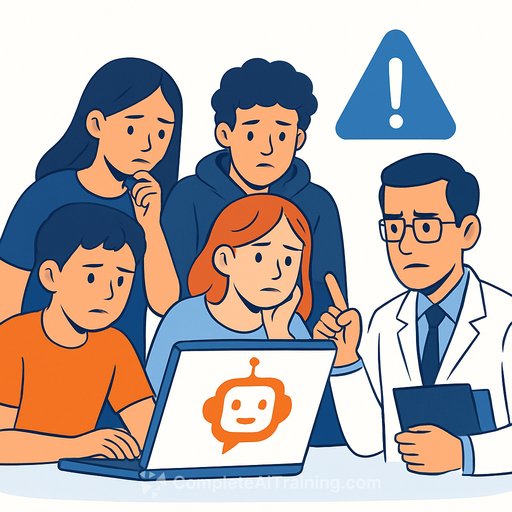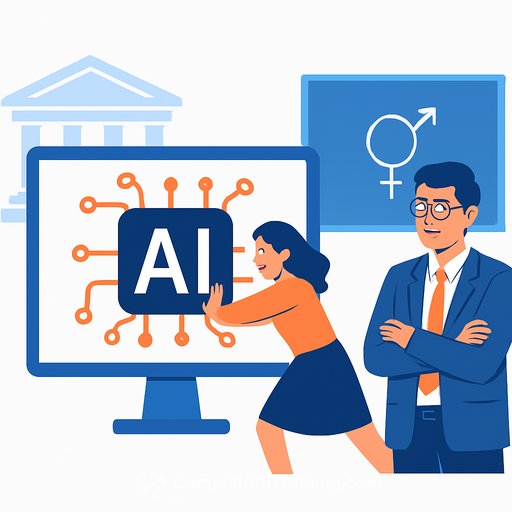AI Is Now in Kids' Hands. Here's What Educators and Parents Need to Know
Artificial intelligence is moving into classrooms and homes. Free chatbots such as ChatGPT are easy for teens and even younger kids to access for homework help or casual conversation.
Use is rising fast. A 2024 survey from Pew Research Center found 26% of U.S. teens (13-17) used ChatGPT for schoolwork, double the rate from a year earlier. Awareness jumped to 79%.
Regulators are watching, platforms are adjusting
In September, the Federal Trade Commission ordered seven companies-including OpenAI, Alphabet, and Meta-to explain how their chatbots may affect children and teens. Under growing scrutiny, OpenAI announced a dedicated ChatGPT experience for users under 18 with parental controls and age prediction, automatically directing minors to age-appropriate policies.
What Early AI Use May Cost
A 2025 preliminary study from MIT's Media Lab tested the cognitive cost of using an LLM to write essays. Fifty-four adults were split into three groups: chatbot help, search engine, or brain-only.
Results: brain connectivity scaled down as external support increased. The brain-only group showed the strongest networks, search was in the middle, and LLM assistance showed the weakest neural coupling. The study also suggests lower ownership over one's work and a "cognitive debt" from deferring mental effort that could erode creativity or leave users more open to manipulation.
As one researcher put it: "The convenience of having this tool today will have a cost at a later date, and most likely it will be accumulated." The findings also point to potential issues with critical thinking when reliance on LLMs is high.
Why This Matters for Schools and Parents
Children may be more vulnerable to these effects. Younger kids tend to anthropomorphize chatbots-machines that talk like people can feel "real," and simple praise from a social robot can shift behavior.
Privacy is another risk. Kids may not recognize when they're sharing personal information, or how their data may be used. Clear tech hygiene and explicit guidance are essential.
Practical Guardrails That Work
- Teach before tech: Build the skill first, then add AI. Students who know the fundamentals are better at spotting inaccuracies and hallucinations.
- Limit for younger children: Keep generative AI use minimal in early grades. They need more chances to think independently and struggle productively.
- Require verification: Ask for cited sources, cross-checks, or fact-checking logs. Make "trust but verify" a default habit.
- Design for thinking, not copying: Use oral defenses, process journals, on-paper drafts, and version history checks. Grade the reasoning, not just the final output.
- Structure AI use: Try a two-step workflow: draft without AI, revise with AI, then submit a short reflection on what the AI changed and why.
- Set privacy rules: No personal data in prompts. Use school accounts where possible, clear chat histories, and sign out on shared devices.
- De-anthropomorphize the tool: Explain how LLMs predict text and can be wrong or biased. Call the chatbot "it," not "she" or "he."
- Monitor and talk: Keep an open line of communication. Review activity, set clear classroom or family rules, and use built-in controls and screen-time settings.
- Close access gaps: Offer supervised school sessions and alternative assignments for students without reliable internet at home.
- Invest in educator training: Build AI literacy and classroom practice. Explore practical courses for your role at Complete AI Training.
What to Watch Next
We don't yet know the long-term effects of starting AI use very young. Researchers are calling for extended studies on early childhood exposure and sustained use over time.
There are reports of severe mental-health harms in some cases, including psychosis-like symptoms and self-harm. Regulators and tech companies share responsibility for guardrails, while schools and families set daily norms that keep kids safe and thinking for themselves.
Bottom line: teach core skills, set clear boundaries, and use AI as a scaffold-not a crutch.
Your membership also unlocks:






